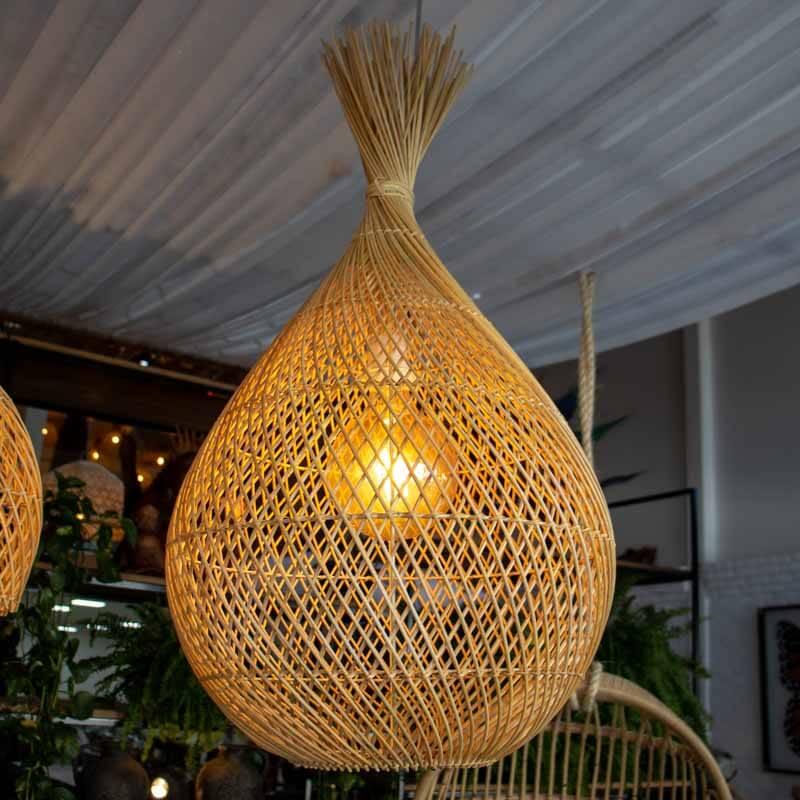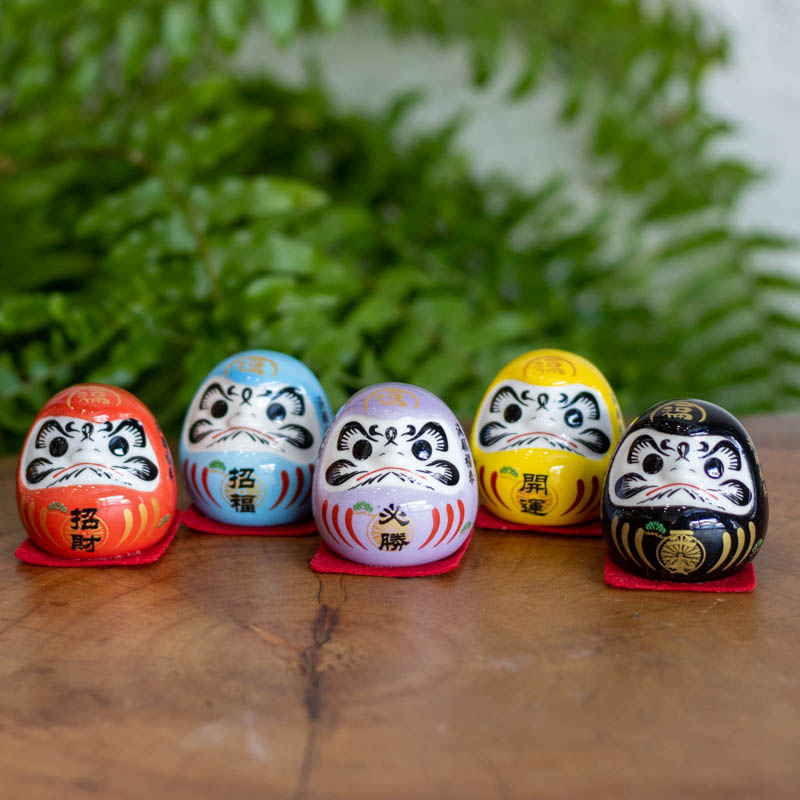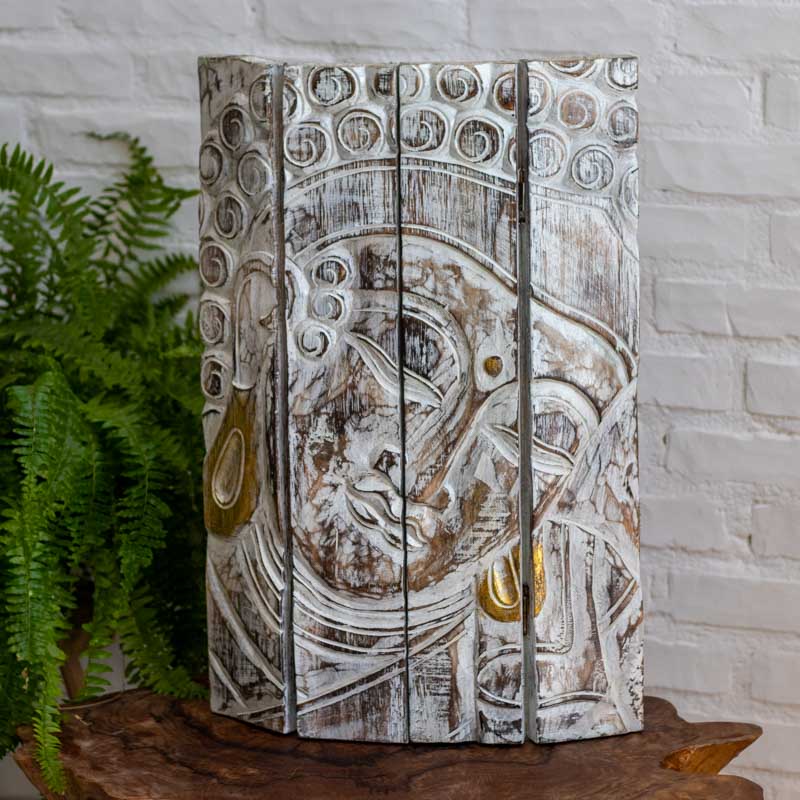Prayers or mantras are efficiently repeated when accompanied by bead necklaces . The use of this powerful concentration tool in spiritual practices (Catholic, Islamic, Buddhist or Hindu) originates in India, during the 8th century BC, being used by a large part of the world's population, in which each tradition gives it a name (either rosary, masbaha or japamala ), meanings and specific amounts of beads.
Japamala is the juxtaposition of the Sanskrit terms japa , which means “to whisper” or “to murmur”, and mala , which symbolizes “garland” or “crown”. Together they unite the spiritual current, the mantra repetitions, with the physical current, representing the energy of the deities according to the type and color of the details. The beads of the famous sacred cord used as a rosary in Buddhism and Hinduism are the guides of practitioners of mantras, yoga and meditation .

Japamala is a cord of beads used to guide prayers and mantras in meditations.
Throughout history, beads have maintained the connection between the physical and spiritual worlds as accessories, being used as energy instruments for talismans or amulets of luck and protection. The same symbolic association is maintained in the Buddhist rosary , which traditionally features 108 beads or variations with 27 and 54 that are counted with the thumb and middle (or ring) finger, as the index finger symbolizes the ego that needs to be absent in a Zen practice . .
For yogi philosophy , when completing 108 repetitions vocalizing or mentalizing the prayer, you access a higher consciential stage, since 108 is considered an Indian mystical number with many symbolic relationships. Among them, the letters of the Sanskrit alphabet stand out; the Hindu sacred texts ( Upanishads ); the holy sites in India; the marma points (life force points of the body); and the stages of the soul on earth. All with 108!

By completing the 108 repetitions of japamala you access your superior consciousness.
In Hindu culture the 108 beads represent the 6 sharipu or arishadvarga (enemies of the soul) that are purified in prayers , characterized as desire ( kama ), anger ( krodha ), greed or greed ( lobha ), delusion or attachment ( moha ), pride ( mada ) and envy ( matsarya ). It is considered that up to 2 defects can be dominant, generating combinations between them that result in 36 permutations such as, for example, desire-attachment and pride-envy.
The permutations can have one of three dominant energies or gunas ( sattva , raja or tama ), producing 108 repetitions, each of the mala beads. However, just like the type of account, the numerical variation is significant to mark the purpose. Meditations and mantras for spiritual progress, for example, use japa malas with 27 beads, while those for the fulfillment of all desires use traditional pieces with 108.

The initial/final mala bead, the 109th and largest of them, is called meru (mountain, merumani and merubead ) or guru (teacher and bead guru). She is the main bead of japamala and cannot be counted, since she is not part of the samsara cycle and is the representation of the divine, the absolute and Brahma , the Hindu god of creation of the universe.
Hindu-Buddhist meditation beads are held together by a cord that symbolizes the connection between all that exists and are spaced apart by knots or interspersed with smaller beads so that they do not touch each other during practices and keep practitioners awake and focused on intention during meditations. mantra repetitions.

The Buddhist rosary cord represents the connection between all that exists.
Some japamalas have multiple markers of 9 between the mantra beads that act as reminders rescuing the mind from distractions in Buddhist prayers . Still, the more traditional Hindu rosaries - made with rudraksha seeds ( Shiva 's tears) - don't have markers and are ideal for more experienced practitioners.
Suspended at the end of the mala appears the tassel or pointer that symbolizes enlightenment, the connection with the divine that is within us. It is interconnected with the Turiya , the natural state of being, the divine self, which remains inaccessible while the three states of consciousness (waking, dreaming and sleeping) are not sublimated. In some cultures it can symbolize the lotus flower , representing spiritual evolution , the purity of spirit necessary to experience enlightenment .

The tassel at the end of the Buddhist rosary symbolizes enlightenment, the attainment of purpose.
The combination of mala and meru beads, inlay styles and tassel colors define the type of energy that vibrates in japamala . In our virtual store there are options for all intentions! Keep an eye on what is in tune with your essence and will help you find physical, mental, emotional and spiritual balance .
Namaste!
Milene Sousa - Art & Tune











2 comments
amei,esclareceu muitas dúvidas, obrigada ❤️
Amei saber tudo sobre o Japamala. Minha mãe tem um Japamala e faz orações todos os dias com o Japamala. Eu tenho uma pulseira que tem 18 pedras e considero como um pequeno Japamala. Porque o número 18 é meu número da sorte e hoje se tornou meu amuleto da sorte. Desde então, eu só estou com muita sorte e sou eternamente grata!